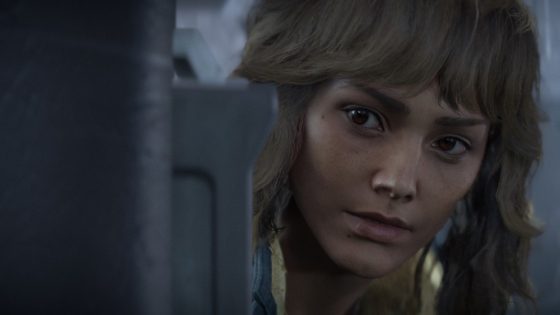In 2002, Thomas Hertog, then a theoretical physics graduate student, stepped inside Stephen Hawking’s office at the University of Cambridge and saw his supervisor’s eyes filled with emotion.
Hawking’s news was also a confession. The famed physicist told his student that his book, “A Brief History of Time,” was wrong because it predicted a barren universe unsuitable for life, and he wanted Hertog to help him find a new theory.
So, in the last 16 years of Hawking’s life, the duo, along with collaborator James Hartle, developed a new explanation for how our universe came to be.
Live Science sat down with Hertog, now a professor at KU Leuven in Belgium, to discuss his new book “On the Origin of Time” (Penguin Random House, 2024), his decades-long collaboration with Hawking, and the mind-bending Darwinian view of the universe’s origins that their work ultimately produced.
Ben Turner: When you met Stephen Hawking, he was beginning to think that the picture of the universe’s origins he had previously presented in “A Brief History of Time” was flawed, and he wanted to look for a new theory. For readers who might not know, what is the standard conception of how our universe began?
Thomas Hertog: Certainly what’s standard is that there’s been some sort of Big Bang — a violent, extremely odd beginning. What’s been challenging is to describe what exactly happened at the Big Bang.
What’s the novelty of Hawking’s contribution in “A Brief History of Time?” What was the key insight he invoked? He came up with a mathematical model of the actual beginning in his famous “no boundary proposal,” in which the Big Bang is a true origin.
Sadly, Hawking’s model didn’t produce a habitable universe. It was, instead, an empty universe — without stars, without galaxies and without life. So, as you say, by the late ’90s, Hawking realized there was a problem with his model.
BT: A popular answer for how our habitable universe could have formed is that the Big Bang led to eternal cosmic inflation with different pockets of expanding space-time — a multiverse — and that our universe just happens to be one of the pockets where the laws of physics balanced out in just the right way to produce life. Why didn’t this idea suit Hawking?
TH: These multiverse models are not falsifiable, even in principle. That’s not because we can’t look at the early universe and check it out; it’s because multiverse models do not make unambiguous predictions of what we should see in this universe.
Related: Stephen Hawking wanted scientists to ‘make black holes’ on Earth. Physics says it’s possible.
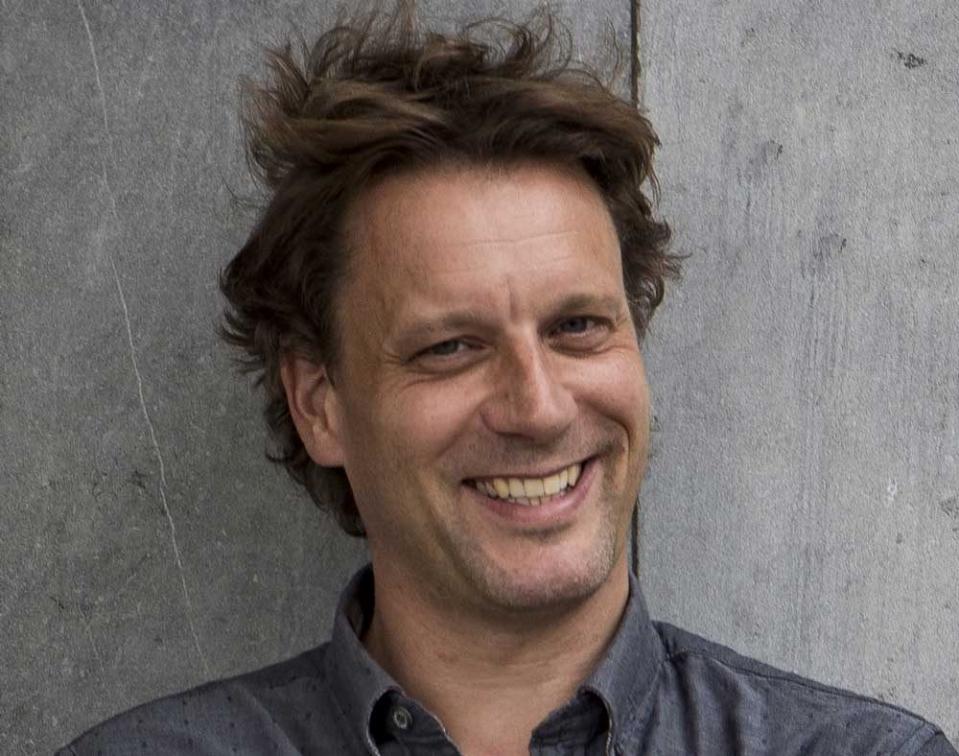
BT: So how did you and Hawking meet and begin to collaborate? You met him when you were a master’s student. What was that like? He was already a legend by this time.
TH: Yes, he was already pretty famous. I met him because, well, I grew up in Belgium, and there was no cosmology going on in Belgium in the late ’90s. Stephen and his colleagues, Martin Rees and those folks, had established a kind of mecca for cosmology at Cambridge. So I had a professor who told me, “Look, if you’re into cosmology, go to Cambridge.”
At Cambridge, it was very well known that whoever came top of the master’s class would get an invitation to go talk to Stephen, and that’s what happened [to me]. So he took me on as his PhD student.
But, of course, the real collaboration started later, when we found ourselves on the same scientific wavelength and interested in the deeper problems to do with the Big Bang. It just happened: You find yourselves on the same wavelength, interested in the same problems, perhaps sharing some sort of intuition. As theoretical physicists, you’re always performing thought experiments on each other, and after a while, you develop a common understanding.
BT: Past theories of the Big Bang have framed the universe as if they’re looking at it from an “objective,” godlike perspective. The theory you and Hawking began working on shifted that perspective to one more like our own — an observer somewhere in the universe. That made you take quantum mechanics, as well as string theory, as your starting point. What did beginning this way teach you?
TH: When you take a God’s-eye of the universe, you are going to be looking for a prior explanation of why the entire cosmos should be doing what it’s doing — some Platonic mathematical truth that looms over the entire universe.
But when you take what you call a more human perspective, a perspective of an observer within the universe, it’s very different. You’ll be taking a more historical perspective. You’re not asking, “Why should the universe be this way?” but “How did it all come about?”
If you use quantum mechanics to reconstruct that history all the way back to the Big Bang, that historical perspective begins to play out at the level of the laws of physics themselves. And that’s, of course, a surprise. We thought the laws of physics were fixed and immutable, but if you go back in time, they begin to simplify. In a sense, they begin to evaporate, even the structure.
That structure, encoded in the laws of physics, begins to disappear until ultimately — and this is the crux of our hypothesis — even the distinction between time and space blurs. The laws of our universe’s evolution, the standard laws of physics, close themselves; they cease to be. Physics itself disappears.
It’s a Darwinian turning. In biology, we go back along the tree of life to life’s origin, and the laws of biology also disappear. That’s because those laws are emergent properties of biological evolution. We claim that the laws of physics are also emergent properties of a much earlier evolution.
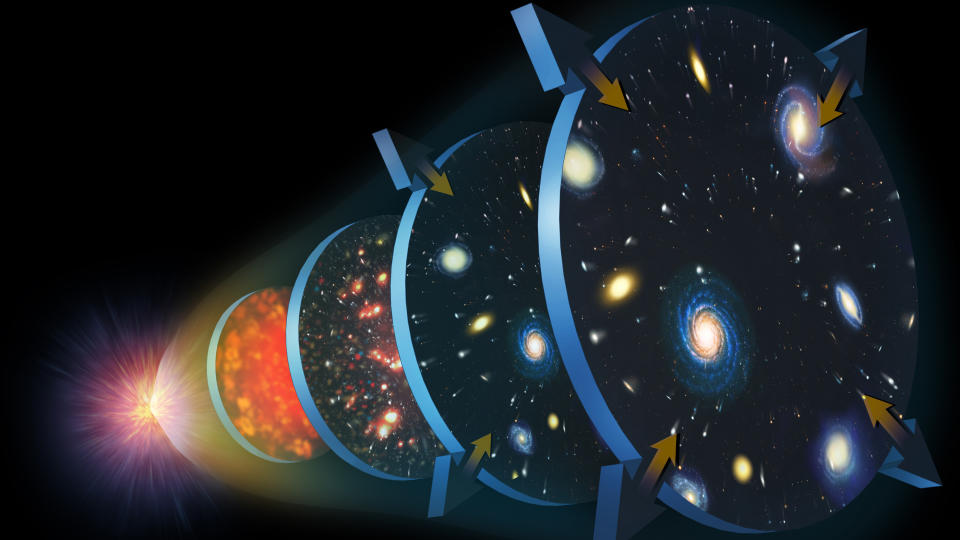

BT: That’s going to strike people as very strange. In biology, selective pressure plays the role of spurring biological laws to evolve. What’s causing physical laws to evolve?
TH: The act of observation in quantum mechanics. You’re going to ask me, “But wait a minute — who’s observing?” Because clearly, in the early universe, there is no human observer. But we all know that the act of observation in quantum mechanics comes from the environment itself — it’s the interactions between the particles and the forces.
Even a single photon can perform an act of observation in quantum mechanics. It can convert a range of possible histories into a tangible, concrete reality.
BT: According to your theory, when we wind time back to the Big Bang, physical laws fold in on themselves and time itself loses its identity — that gives it an origin point. Einstein particularly disliked this notion. Why did he object to it?
TH: When Einstein and his contemporaries were running the evolution of the universe backwards in time, they were doing this using Einstein’s own theory in a classical, deterministic manner. They ran into what they call the singularity [where the equations describing the universe broke down]. The origin of time, the Big Bang, seemed to not be part of science.
Related: Tweak to Schrödinger’s cat equation could unite Einstein’s relativity and quantum mechanics, study hints
When Stephen and I ran the evolution of the universe backwards, we did it in a quantum mechanical way. This agrees with Einstein until you reach the earlier stages where our picture is very, very different. The laws of physics never really break down [in Hertog, Hartle and Hawking’s picture]; they just gradually disappear. I think Einstein would be okay with that.
BT: Key to your idea of time having an origin is that it’s an emergent property from the interactions of many quantum particles at the edge of the observable universe. The universe is like a disk expanding outward, and at the edge of that disk are qubits, particles containing all the universe’s information. The play of these particles beams time into our universe from that furthest edge — like a cosmic hologram. Can you explain the holographic principle a bit more?
TH: So the way we read the past of the universe is from a holographic perspective. The holographic screen is an abstract representation of our reality, and as we zoom out further and further from that screen, it corresponds to going back in time. The picture gets more coarse-grained, you lose information, you lose pixels, and the Big Bang is the limit where you run out of information. The beginning of the world is really an epistemic horizon where science (from the holographic perspective) simply doesn’t reach further back.
And, of course, that fits in very well with the story that I told you earlier — that the laws of physics, along with time and space, disappear as we reach the Big Bang, the origin of physics. The holographic implementation of our vision made it click together.
That’s how theoretical physics works. In retrospect, you start off with a lot of intuition, and you mold this into a mathematical framework that is consistent and that allows you to ultimately predict new phenomena. This is where current research is going: How can we test this model? How can we find fossils of this very early evolution?
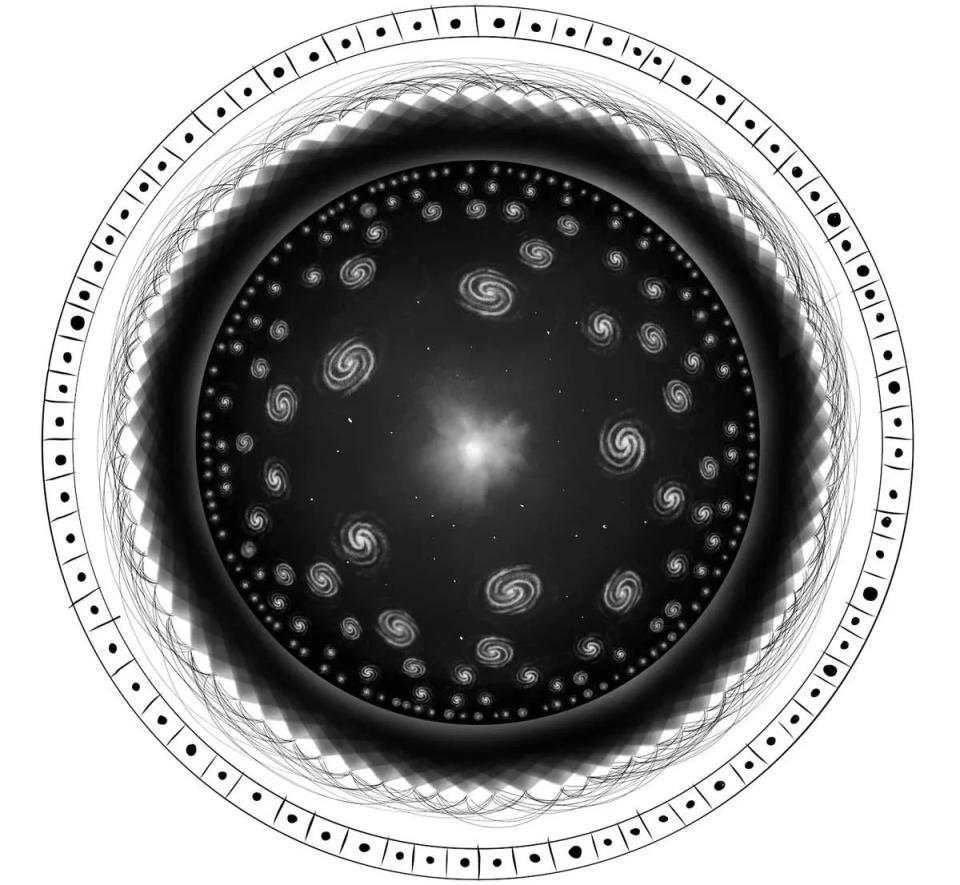

BT: That’s actually my next question.
TH: [Laughs] I feared.
BT: So where can we look? Before the cosmic microwave background (CMB), the universe was completely opaque. How do we peer beyond that microwave fuzz?
TH: The cosmic microwave background gives you a picture of the universe 380,000 years after the Big Bang, when it became transparent. But this early phase of evolution that I’m talking about happens much sooner, so you have to peer through [the CMB]. And you can’t do this with light, electromagnetic waves.
But gravitational waves go through everything, so you can hope to look further backward. In principle, there’s no limit — you can look all the way back to the Big Bang and unlock this deeper layer of evolution.
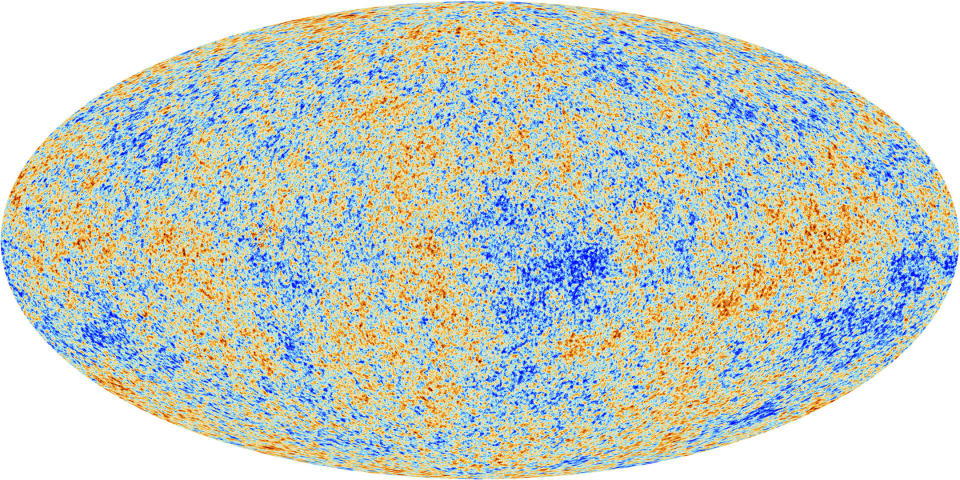

BT: Say we are able to. What might we see?
TH: We’ve hypothesized. How? Well, the way I envision this early stage is a little bit like a branching, diversifying tree of physical laws. Each of these branchings is really the birth of a new kind of force — one force splits into two with new particles and more structure. Some of these branches are pretty violent, coming with bursts of gravitational waves which are not localized to one place and appearing as background radiation, much like the cosmic microwave background.
It’s the entire universe transitioning into a new state when it cools and expands, and it’s accompanied by a strong burst of inflation.
BT: Your theory describes physical laws evolving quickly when the universe was dense and hot, and there were plenty of interactions or “observations” between particles. But if these laws still have the capacity to evolve, does that have any implications for how the universe ends?
TH: The short answer is, of course, that I don’t know. But if you challenge me a little bit, I can say something very speculative: If the laws of physics were not determined, fixed and immutable in the past, it’s natural to expect they won’t be eternal. So, even though that evolution is suppressed now (because the universe is cold), it’s not infinitely suppressed. It’s not gone.
BT: We’ve spoken a lot about intuition in physics. The one you shared with Hawking fueled this collaboration and enabled you to finish your theory, even as Hawking slowly lost his ability to use his artificial voice. How did you do that?
TH: It’s a little bit like being in a marriage, right? Or really any long-term relationship — you can guess one another’s thoughts. Towards the end, that happened to us, as well. We developed an intimacy when it came to cosmology and its fundamental problems. In the later stages, we developed a nonverbal layer of communication in which I could fire yes-or-no questions at Stephen and read his facial expressions.
This developed in a fairly spontaneous manner, but it was only possible because, in the late ’90s and early ’00s, we had some very good years in which Stephen could speak fairly fluently through his speech synthesizer. He really dragged me into his thinking about these paradoxes associated with the multiverse.
related stories
—’It could be profound’: How astronomer Wendy Freedman is trying to fix the universe
—James Webb telescope discovers oldest black hole in the universe
—James Webb telescope discovers earliest galaxy in the known universe — and its shockingly big
BT: Do you think his ability to move outside problems and intuit them is what made him such a great physicist?
TH: Stephen’s intuition was grounded in 15 years of doing a lot of calculations. It didn’t come to him from heaven. It was rooted in the early stages of his career.
Of course, there’s something genius that happened in the early ’80s, when he lost his ability to write equations. He had the capacity and the stubbornness to retrain himself to perform theoretical physics in a very unique way. It was more intuition-based, more distant from the equations than others, and with the ability to visualize shapes and geometries in his head. His true glory lies in that, with this new language, he was able to arrive at certain discoveries which were very difficult to reproduce with equations.
Editor’s note: This interview has been condensed and edited for clarity.
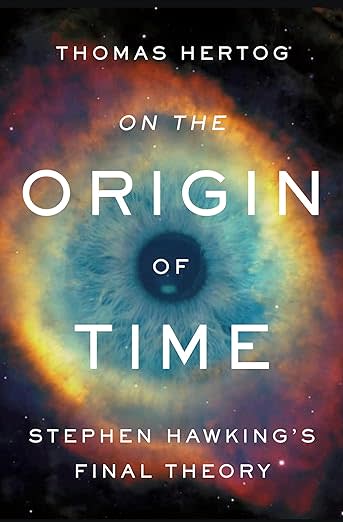

On the Origin of Time: Stephen Hawking’s Final Theory $16.79 on Amazon
If you enjoyed this interview with Thomas Hertog, you can read more about the final theory he developed in close collaboration with famed physicist Stephen Hawking in his new book, “On the Origin of Time.” It’s a clear tour of the truly mind-bending concept at the heart of Hawking’s last work.
Source Agencies


